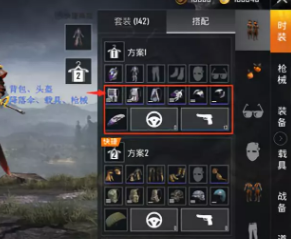cryptocurrency cons, Top
With the increasing competitive pressure, the incidence of brain diseases is on the rise. For example, cerebrovascular diseases caused by stress, such as hypertensive cerebral hemorrhage, are caused by long-term mental stress, which makes blood pressure fluctuate greatly, thus causing damage to brain blood vessels. Also, the incidence of brain tumors may be related to long-term stress and lifestyle changes. Because stress will affect the immune system of the human body, the body's ability to monitor and remove tumor cells will decrease.In order to meet the growing demand for biomedicine in neurosurgery, the research and development direction needs to be more precise and diversified. On the one hand, it is necessary to increase the research on the pathogenesis of brain diseases in order to develop more targeted drugs. For example, in-depth study of the causes of neurodegenerative diseases such as Alzheimer's disease and Parkinson's disease, so as to find effective treatment drugs. On the other hand, we should actively explore the combination of biotechnology and other technologies, such as the combination of nanotechnology and neurosurgery biomedicine, which can improve the targeting and therapeutic effect of drugs.This competitive pressure has not only brought about a crisis in employment, but also had an impact on psychology and physiology. From the psychological point of view, under the pressure of long-term competition with machines, human beings are prone to negative emotions such as anxiety and inferiority. The accumulation of these emotions may lead to mental health problems, such as depression and neurasthenia. Physiologically speaking, in order not to be eliminated in the competition, people are often overworked and in a state of tension for a long time, which will affect the nervous system function of the human body. For example, long-term stress may lead to headaches, insomnia and other problems, and even serious organic diseases of the nervous system.
Iv. Countermeasures and future prospectsIv. Countermeasures and future prospects
AI has penetrated into every corner of our lives. From a simple voice assistant to a complex data analysis system, AI has demonstrated amazing ability in processing information and solving problems. Humanoid robots have begun to emerge in some manual labor and task execution in specific environments. For example, in some industrial production lines, humanoid robots can accurately complete assembly, handling and other work; In dangerous environments such as nuclear radiation areas or fire sites, humanoid robots can replace humans for detection and rescue work. This makes human beings face great challenges in the traditional labor field, and people need to constantly improve their skills and knowledge in order to find a foothold in the competition with these intelligent machines.(A) the direction of research and developmentSecond, the impact of competitive pressure on human beings
Strategy guide 12-14
Strategy guide
12-14
Strategy guide
12-14
Strategy guide



























